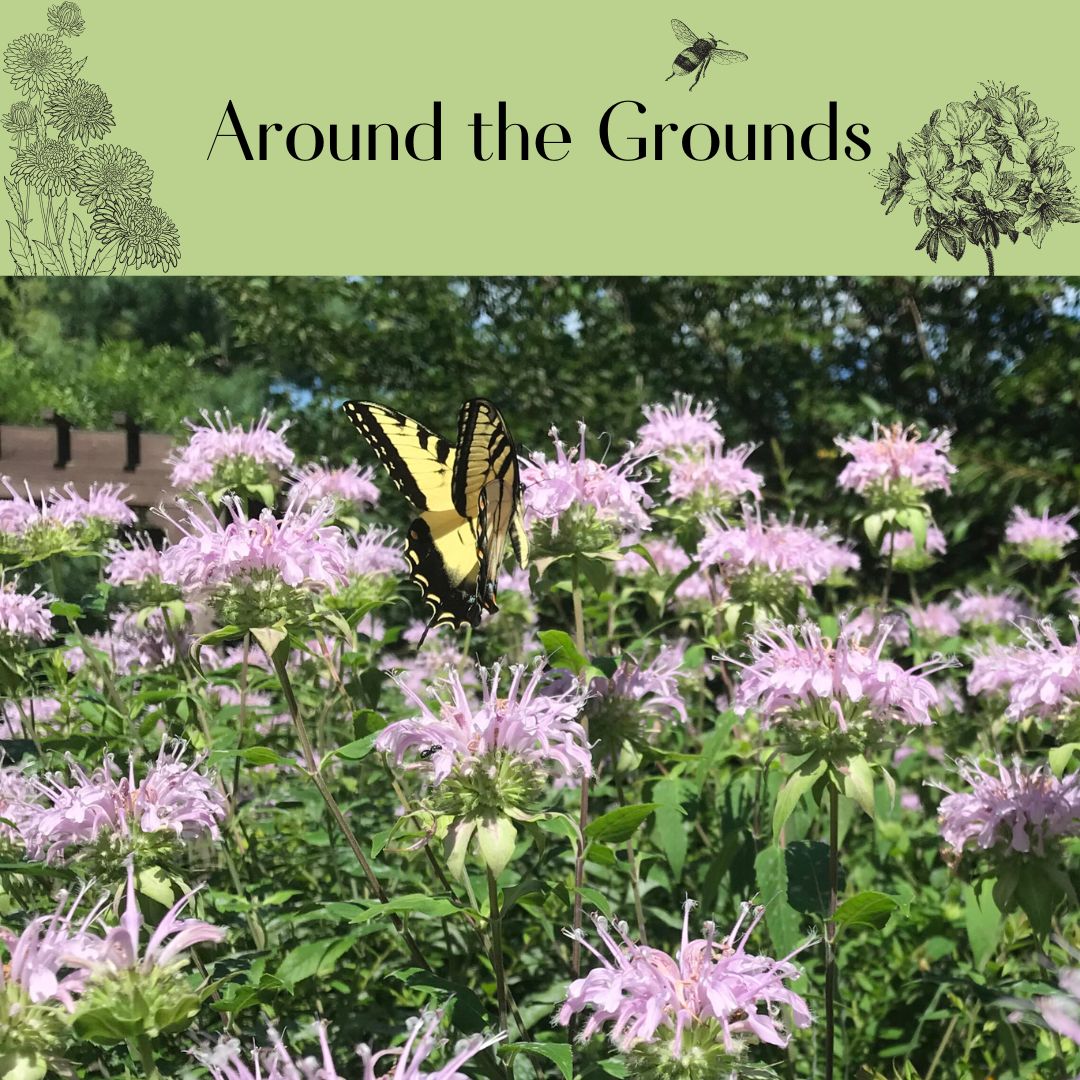June is here — the bees are buzzing, the butterflies are fluttering, and everybody is excited about summer flowers. It’s National Pollinator Month!
At the Nature Center, we are also celebrating the first anniversary of our newest Pollinator Garden. It is astonishing to see how lush, diverse, and colorful our garden has grown in just one year!
Want to know how we did it?
Right next to our big open lawn, in a very visible spot near the beehives, there was a messy patch of weeds. The soil was poor and dry, and there was very little shade. So…the perfect spot for a pollinator garden! The first task, done by Guy Pardee of Suburban Natives LLC, was to clear the area, getting rid of all the weedy invasive plants. Then, the ground was covered with leaves and left for the winter.
The following spring, we cleared it again and prepared to plant.
A good friend to the Nature Center, Bill Boyce of Biosphere Landscape Architects, came up with a great idea for the garden. We would make a literal “pollinator pathway” wandering through the blooming flowers, with signs along the way identifying pollinators. Bill did a “back-of-the-envelope” concept sketch for us on site.
We roughed out the lines in the dirt, and then defined the path with mulch.
Then it was time to plant. We chose tough native plants — species that evolved in our region growing in open dry meadows, able to survive without fertilizer, pesticide, or supplemental water. And though we planned to water and weed the garden for a season or two until the plants were established, we wanted a garden that eventually would need little maintenance. We also needed plants that would not be attractive to deer, rabbits, or woodchucks. We made a plant list, scoured the nurseries, and bought about 450 plants in containers (with funds contributed by multiple donors).
If you would like to know which plants we selected, click on the link below.
We started in the middle, planting the “spine” of the garden with tall, deep-rooted Switch Grasses that would support the tallest flowers in the center of the garden.
We then worked outward, planting clusters of flowering species arranged in descending height. Shorter native grasses and ground covers were added along the edges to fill in and provide texture. We planted densely, aiming to have the plants grow together to occupy all soil areas within 2 seasons, thereby reducing available space for weeds.
We decided not to mulch after planting, for a few reasons. Some of the invasive plants removed from the area were deep-rooted and would re-appear soon, with or without mulch. Weeds would be easier to see and remove promptly if we did not mulch. We also hoped our new plants would quickly grow together, expanding to occupy the entire ground space, and reseed themselves freely in the garden. Mulch would inhibit those natural growth processes. Finally, mulch would prevent the pollinators we are trying to attract from nesting in the ground, as many of them want to do. We want to support pollinators through their entire life-cycles.
We finished planting the Pollinator Garden on June 2, 2021. By August 2, it was in full bloom and alive with pollinators.
As we had hoped, this spring the garden came back full and lush. Weeding is ongoing, but not as difficult as we had anticipated.
Photo: Nick Macaluso
So, please come celebrate Pollinator Month with a walk on our new pathway, and let the pollinators give you a tour!

